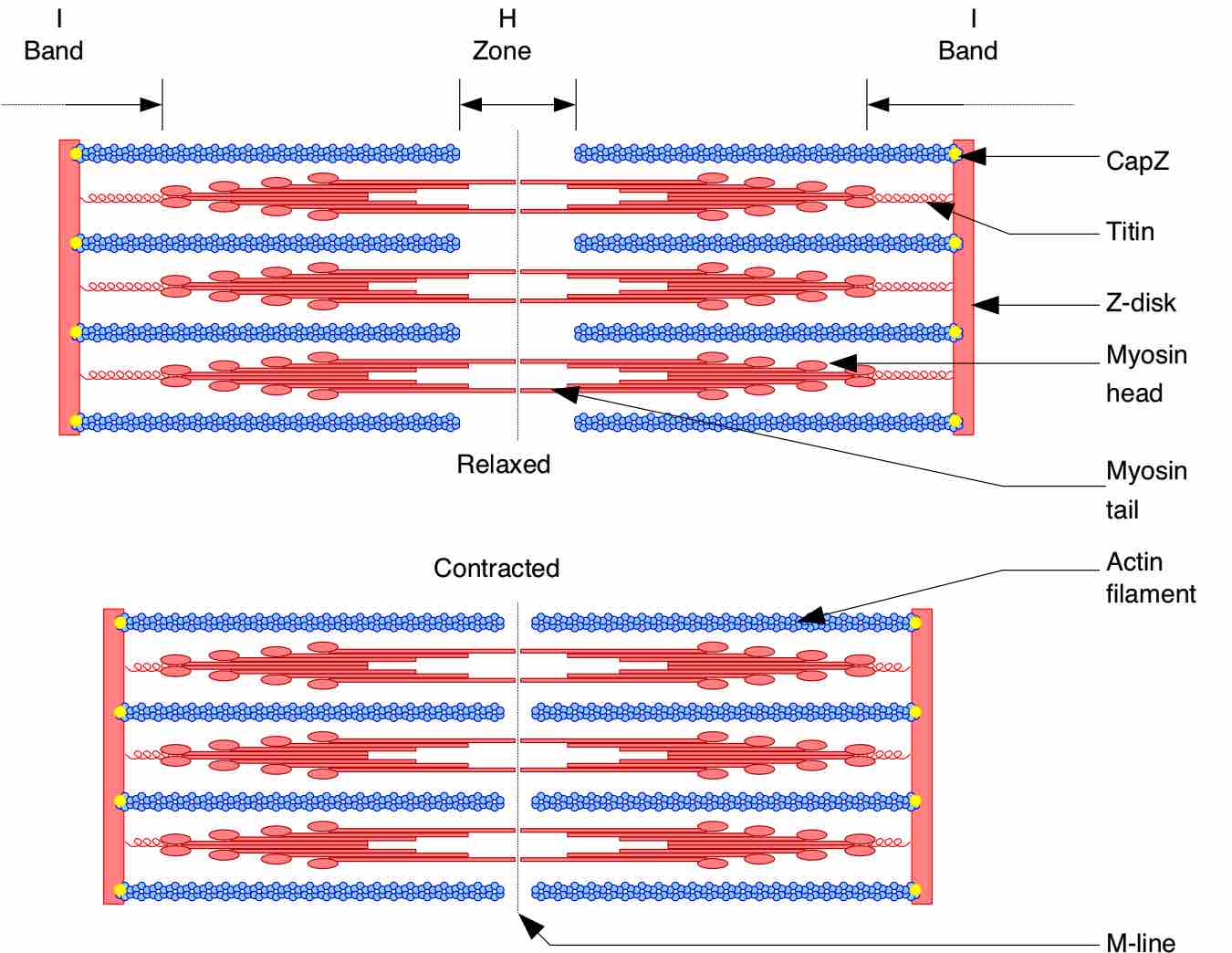Cardiomyocytes are capable of coordinated contraction, controlled through the gap junctions of intercalated discs. The gap junctions spread action potentials to support the synchronized contraction of the myocardium. In cardiac, skeletal, and some smooth muscle tissue, contraction occurs through a phenomenon known as excitation contraction coupling (ECC). ECC describes the process of converting an electrical stimulus from the neurons into a mechanical response that facilitates muscle movement. Action potentials are the electrical stimulus that elicits the mechanical response in ECC.
Calcium-Induced Calcium Release
In cardiac muscle, ECC is dependent on a phenomenon called calcium-induced calcium release (CICR), which involves the influx of calcium ions into the cell, triggering further release of ions into the cytoplasm. The mechanism for CIRC is receptors within the cardiomyocyte that bind to calcium ions when calcium ion channels open during depolarization, releasing more calcium ions into the cell.
Similarly to skeletal muscle, the influx of sodium ions causes an initial depolarization; however, in cardiac muscle, the influx of calcium ions sustains the depolarization so that it lasts longer. CICR creates a "plateau phase" in which the cell's charge stays slightly positive (depolarized) briefly before it becomes more negative as it repolarizes due to potassium ion influx. Skeletal muscle, by contrast, repolarizes immediately.
Pathway of Cardiac Muscle Contraction
The actual mechanical contraction response in cardiac muscle occurs via the sliding filament model of contraction. In the sliding filament model, myosin filaments slide along actin filaments to shorten or lengthen the muscle fiber for contraction and relaxation. The pathway of contraction can be described in five steps:
- An action potential, induced by the pacemaker cells in the sinoatrial (SA) and atrioventricular (AV) nodes, is conducted to contractile cardiomyocytes through gap junctions.
- As the action potential travels between sarcomeres, it activates the calcium channels in the T-tubules, resulting in an influx of calcium ions into the cardiomyocyte.
- Calcium in the cytoplasm then binds to cardiac troponin-C, which moves the troponin complex away from the actin binding site. This removal of the troponin complex frees the actin to be bound by myosin and initiates contraction.
- The myosin head binds to ATP and pulls the actin filaments toward the center of the sarcomere, contracting the muscle.
- Intracellular calcium is then removed by the sarcoplasmic reticulum, dropping intracellular calcium concentration, returning the troponin complex to its inhibiting position on the active site of actin, and effectively ending contraction as the actin filaments return to their initial position, relaxing the muscle.

Sliding Filament Model of Contraction
Muscle fibers in relaxed (above) and contracted (below) positions

Animation of Myosin and Actin
This animation shows myosin filaments (red) sliding along the actin filaments (pink) to contract a muscle cell.